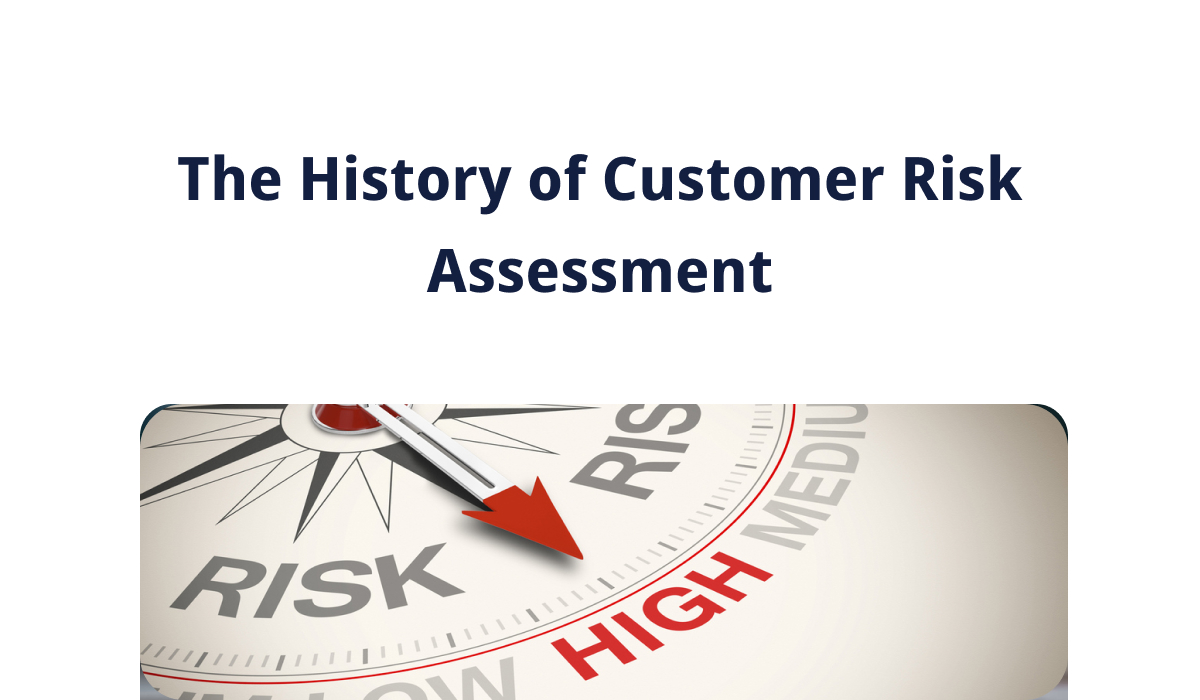Customer risk assessment is a crucial process for fintech and neobank businesses in preventing money laundering and financial fraud. It involves identifying and evaluating the risk posed by each customer based on their financial activity, behavior, and background information.
With the rise of fintech and neobank businesses, the need for reliable and efficient customer risk assessment solutions has become more important than ever before.
In this article, we will explore the history of customer risk assessment, from its early origins to its current state in the fintech industry. We will also discuss the challenges and opportunities that lie ahead for the future of customer risk assessment, and how emerging technologies like AI and machine learning could revolutionize the process.
By understanding the history and importance of customer risk assessment, fintech and neobank businesses can better protect themselves and their customers from financial crime.
The early history of customer risk assessment
Customer risk assessment has been around for centuries, but it wasn't until the 20th century that it became a more formalized process. In the early days of finance, customer risk assessment was based on simple observation and intuition. Bankers would judge a customer's creditworthiness based on their reputation, social standing, and other subjective factors.
Historical context of customer risk assessment
As commerce and trade grew, the need for more sophisticated methods of customer risk assessment became apparent. The first credit bureaus were established in the late 1800s, providing lenders with more detailed information on borrowers' credit histories. However, the use of credit bureaus was limited to a small group of wealthy individuals and businesses.
First methods of customer risk assessment
In the 1920s, the Federal Reserve introduced the first formalized guidelines for assessing customer risk. Banks were required to maintain reserve ratios based on the risk level of their loans, which encouraged them to evaluate customers more carefully. This led to the development of credit scoring models, which used statistical analysis to predict the likelihood of a borrower defaulting on a loan.
Role of government regulations in customer risk assessment
The Great Depression in the 1930s prompted the government to enact more regulations to protect consumers and prevent financial crises. The Securities Act of 1933 required companies to disclose information about their financial health and operations, while the Banking Act of 1933 established the FDIC and placed limits on banks' investment activities. These regulations led to more standardized and transparent methods of customer risk assessment, with banks and other financial institutions using data-driven models to evaluate risk.
In conclusion, the early history of customer risk assessment was marked by the gradual development of more formalized methods of evaluation. The use of credit bureaus and statistical models paved the way for more sophisticated approaches to customer risk assessment, and government regulations helped establish standards for transparency and accountability.
The future of customer risk assessment
The future of customer risk assessment is exciting, with emerging technologies like AI and machine learning poised to revolutionize the process.
With the rise of fintech and neobank businesses, customer risk assessment has become more important than ever before. These businesses often operate entirely online and must rely on technology to identify and evaluate customer risk.
Impact of AI and machine learning
AI and machine learning have the potential to greatly enhance customer risk assessment. These technologies can process vast amounts of data and identify patterns that would be impossible for humans to detect. They can also learn from past data to improve accuracy and efficiency over time.
Implementation of risk-based approaches
Risk-based approaches have become increasingly popular in customer risk assessment. These approaches involve evaluating customers based on the level of risk they pose, rather than treating all customers the same. For example, low-risk customers may only need to provide basic information, while high-risk customers may be subject to more extensive background checks.
Customer risk assessment has evolved significantly in the modern era. The introduction of technology and risk-based approaches has made it easier for businesses to identify and prevent financial crime.
Advancements in biometrics and identity verification
Advancements in biometrics and identity verification are also likely to impact customer risk assessment. Biometric data such as fingerprints and facial recognition can be used to verify a customer's identity quickly and securely. This could reduce the risk of identity fraud and streamline the customer onboarding process.
Increased emphasis on collaboration
As financial crime becomes more sophisticated, there is an increased emphasis on collaboration between businesses, government agencies, and law enforcement. Collaboration can help businesses identify and prevent financial crime more effectively, and can also lead to more standardized and transparent methods of customer risk assessment.
Adoption of blockchain technology
The adoption of blockchain technology could also impact customer risk assessment. Blockchain is a decentralized ledger that provides a secure and transparent way to record transactions. By using blockchain technology, businesses could improve transparency and accountability in the customer risk assessment process.
Businesses that stay at the forefront of these trends will be better equipped to protect themselves and their customers from financial crime.
Conclusion
Customer risk assessment has a long and evolving history, and the importance of this process is only increasing with the rise of fintech and neobank businesses. As financial crime becomes more sophisticated, it is crucial for businesses to stay up-to-date with the latest trends and technologies in customer risk assessment.
Today, businesses have access to a wide range of advanced tools and technologies for customer risk assessment, including machine learning algorithms, big data analytics, and artificial intelligence. Risk-based approaches are also becoming increasingly popular, with businesses evaluating customers based on the level of risk they pose.
The future of customer risk assessment is likely to be characterized by continued advancements in technology, increased collaboration, and the adoption of new tools and approaches. By staying at the forefront of these trends, businesses can better protect themselves and their customers from financial crime.
At Flagright, we are committed to helping fintechs and neobanks stay ahead of the curve in customer risk assessment. Our no-code centralized AML compliance and fraud protection platform offers a wide range of services, including real-time transaction monitoring, customer risk assessment, KYC and KYB orchestration, sanctions screening, fintech licensing, and advisory services.
By leveraging the latest technologies and risk-based approaches, we can help our clients identify and prevent financial crime more effectively than ever before.
To learn more about our platform and how we can help your fintech or neobank business, contact us to schedule a free demo.

















.webp)











